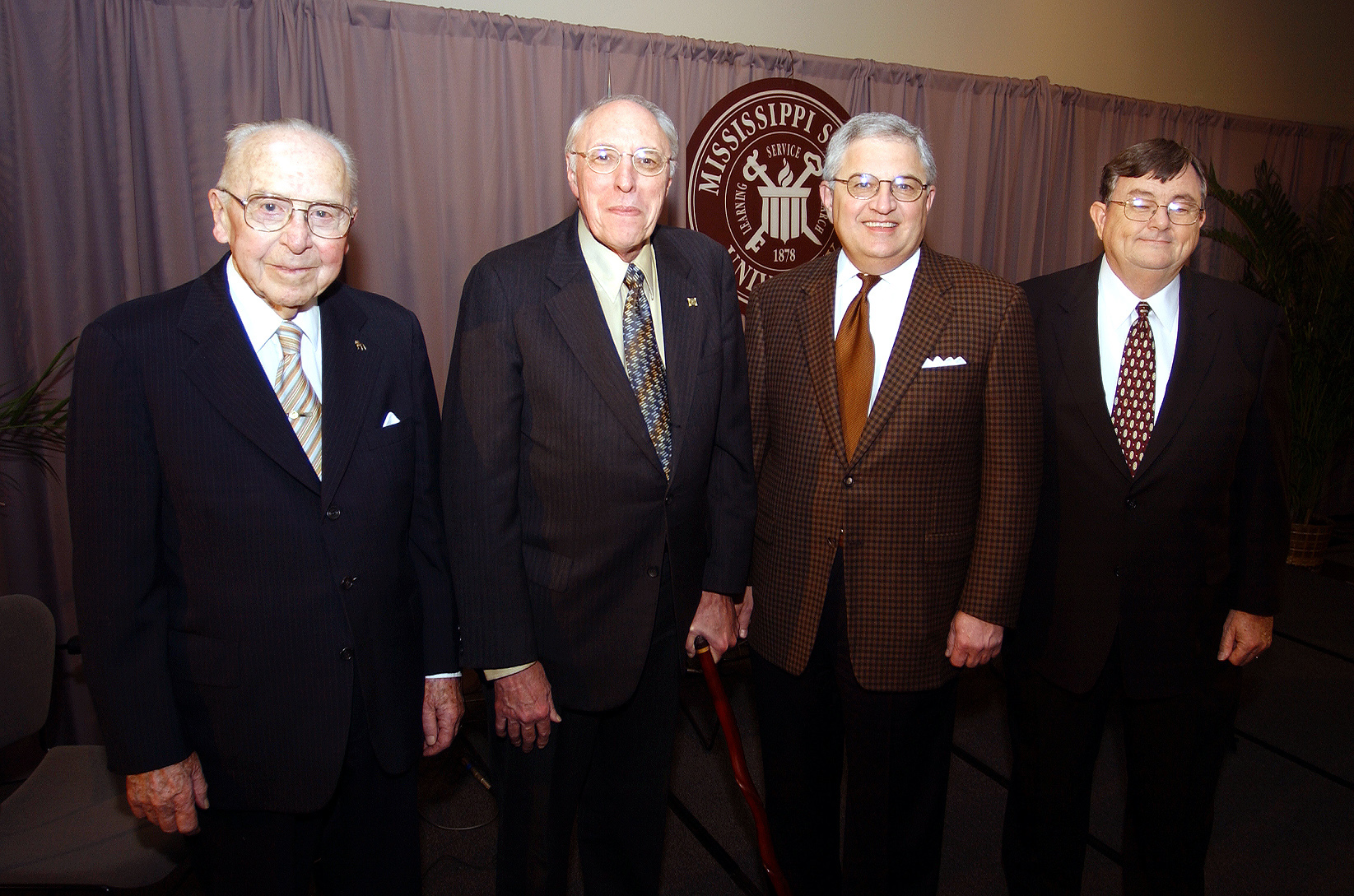Contact: Maridith Geuder

Celebrating Mississippi State University's 125th anniversary, all four living former and current presidents were on campus Feb. 28, 2003, for Founders Day activities. Participating in a program at the Hunter Henry Center are from left, Dean W. Colvard, Donald W. Zacharias, Malcolm Portera, and current MSU President J. Charles Lee.
Representing nearly a half century of higher education leadership in the state, four Mississippi State University presidents recalled highlights of their tenure during Founders Day events Friday night on the Starkville campus.
J. Charles Lee, named in January to lead the land-grant university, joined former presidents Malcolm Portera, Donald W. Zacharias and Dean W. Colvard for a discussion of the school's past achievements and future goals.
Mississippi State was established as the Mississippi Agricultural and Mechanical College with legislation signed by Gov. John M. Stone on Feb. 28, 1878. Stone became the second president of the college in 1899.
The Friday event was the first of several planned during the year to commemorate the university's 125th anniversary. Others will include the Super Bulldog Weekend in April and the formal investiture of Lee as president in September.
In a session moderated by education dean Roy H. Ruby, the leaders recalled major challenges during their service and shared their visions of Mississippi State's role for the future.
Noting that the university is unique in its heritage of always looking to the future, the four predicted that Mississippi State is poised to serve as a resource and catalyst for the state and region.
Colvard, who was involved in the development of North Carolina's Research Triangle, noted that MSU is positioned to serve as a resource to attract and support industry, and Lee noted that his goal is that the university would serve as a hub whose spokes radiate into every aspect of improving lives.
"My vision is that we will develop a knowledge-based system to advance learning and speed up commercialization of knowledge. This university can be a creative generator to flow out into the state to serve all of the people of Mississippi," Lee said.
Colvard, the 12th president from 1960-66, now lives in Charlotte, N.C. He left MSU to become the first president of the University of North Carolina-Charlotte.
Malcolm Portera, 1998-2001, now is chancellor of the University of Alabama system, while Donald W. Zacharias, 1985-1997, is president emeritus at MSU.
Zacharias currently coordinates the university's two most distinguished scholars program.
MSU enrollment is more than 16,600, more than double that in Colvard's final year when there was only one campus in Starkville. In addition to Starkville, the school now has a second major campus in Meridian, and offers additional courses at the U.S. Army Corps of Engineers Waterways Experiment Station in Vicksburg and the John C. Stennis Space Center in Hancock County.
African-American enrollment has gone from Richard Holmes, the first black student in 1965, to today's 18 percent. Holmes, a physician who recently joined the MSU health center staff, was recognized for his personal and professional achievements during the Hunter Henry Center program.
Female enrollment now is nearly 50 percent-a far cry from the days when the largest local concentration of college women was found at Mississippi University for Women in nearby Columbus.
Originally named the Mississippi Agricultural and Mechanical College, the university ranks 57th nationally among public universities in total research and development expenditures. It's also fifth in agricultural expenditures and 34th in engineering expenditures.